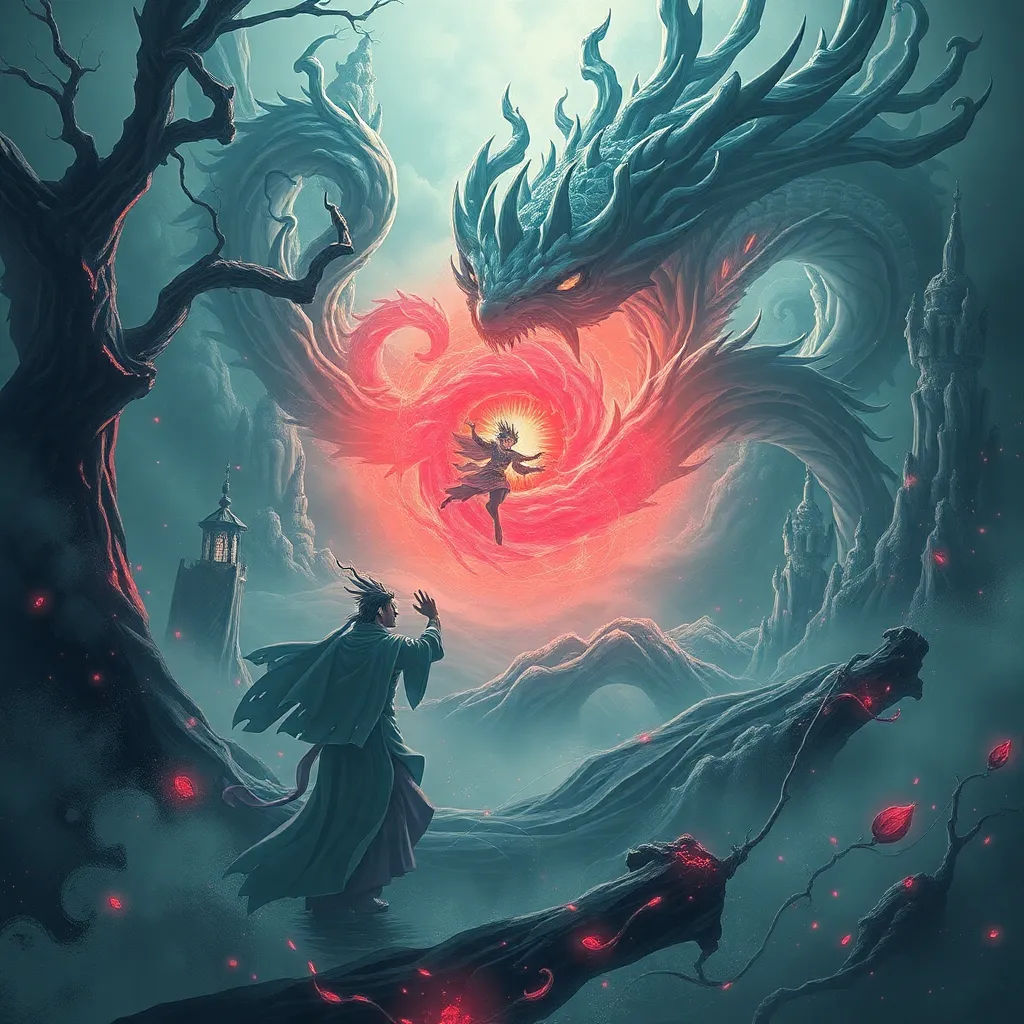The Gumiho’s Whisper: Tales of Enticement and Transformation
I. Introduction to the Gumiho Mythology
The Gumiho, a fascinating creature in Korean folklore, is a nine-tailed fox known for its beauty and cunning nature. This mythical being has captivated the imagination of many and has a rich tapestry of stories woven through Korean culture.
Historically, the Gumiho has served as both a cautionary tale and a symbol of longing, embodying the complexities of desire and transformation. Its portrayal has evolved over centuries, reflecting societal norms and fears.
The purpose of this article is to explore the themes of enticement and transformation as embodied by the Gumiho, shedding light on its significance in both historical and modern contexts.
II. The Origin Stories of the Gumiho
The origin stories of the Gumiho vary significantly across different regions in Korea. Traditionally, some narratives depict the Gumiho as a malevolent spirit that lures unsuspecting victims to their demise, while others present it as a tragic figure seeking redemption.
- Traditional narratives: Commonly, the Gumiho is portrayed as a beautiful woman who preys on men. In some versions, she can transform into a stunning woman to charm her victims.
- Regional variations: In certain areas, the Gumiho is depicted more sympathetically, often exploring themes of love and loss.
The symbolism of the Gumiho can also be traced back to ancient texts, where it represents the duality of nature, reflecting both the beauty and the savagery of the wild. Over time, the legend has evolved, adapting to the changing cultural landscape of Korea.
III. Characteristics and Traits of the Gumiho
The Gumiho is characterized by its striking physical attributes and shapeshifting abilities. Typically depicted as a stunning woman, she possesses the ability to transform into a fox, symbolizing her dual nature.
- Physical attributes: The Gumiho is often described as having long, flowing hair and an enchanting smile, traits that draw victims to her.
- Shapeshifting abilities: This creature can seamlessly shift between human and fox forms, allowing her to navigate both worlds.
Moreover, the Gumiho exhibits distinctive behaviors and personality traits, often emphasizing her cunning and seductive nature. This duality of beauty and danger is a recurring theme in Gumiho depictions, leaving a lasting impression on those who encounter her.
IV. The Theme of Enticement in Gumiho Tales
The allure of the Gumiho as a seductress is a central theme in many tales. Often, she is portrayed as irresistible, using her charm to lure men into dangerous situations.
Key stories highlight this enticement, with the Gumiho often representing the ultimate temptress. For example, in some folktales, she engages in romantic relationships that lead to tragic outcomes, illustrating the dangers of succumbing to allure.
The psychological implications of the Gumiho’s charm delve into the complexities of desire and the consequences of temptation. Her stories serve as a reminder of the fine line between attraction and peril.
V. Transformation: The Gumiho’s Dual Nature
The journey from human to Gumiho and vice versa is a powerful motif in these legends. Many stories explore the transformation process, often depicting characters who grapple with their identity.
- Human to Gumiho: Characters who become Gumiho often do so as a result of betrayal or unfulfilled desires, highlighting their transformation as a curse.
- Gumiho to human: Conversely, some tales depict Gumiho seeking humanity, illustrating their desire for connection and acceptance.
Metaphorical interpretations of transformation in folklore often reflect broader themes of change, identity, and the struggle between good and evil. Case studies of characters undergoing transformation reveal the emotional depth of these narratives, showcasing the Gumiho as more than just a villain.
VI. Modern Representations of the Gumiho
In contemporary media, the Gumiho has undergone significant evolution. Films, television series, and literature have reimagined this mythical creature, often presenting her in new lights.
- From villain to anti-hero: Modern portrayals frequently depict the Gumiho as a complex character, challenging the traditional notions of good and evil.
- Globalization’s impact: The Gumiho’s narrative has been influenced by global storytelling trends, leading to a broader audience and increased popularity.
These shifts in portrayal reflect changing societal attitudes and the desire for more nuanced representations of femininity and power.
VII. Cultural Reflections and Societal Commentary
The Gumiho serves as a mirror reflecting societal fears and desires. Through her tales, we gain insight into the cultural psyche of Korea, particularly regarding gender roles and expectations.
- Gender roles: The portrayal of the Gumiho often raises questions about femininity, power dynamics, and the societal perception of women.
- Societal commentary: Her stories can be interpreted as cautionary tales, warning against the dangers of unchecked desire and the consequences of betrayal.
Lessons learned from Gumiho tales resonate in modern society, encouraging reflection on personal choices and the complexities of human relationships.
VIII. Conclusion: The Enduring Legacy of the Gumiho
In summary, the Gumiho’s legend encompasses key themes of enticement and transformation, reflecting the complexities of human nature and societal norms. Her stories have evolved, maintaining relevance in contemporary culture.
The Gumiho’s enduring legacy serves as a testament to the power of folklore in exploring the depths of desire, identity, and transformation. As we continue to engage with these narratives, we uncover the timeless lessons they impart about the intertwined nature of allure and change.




